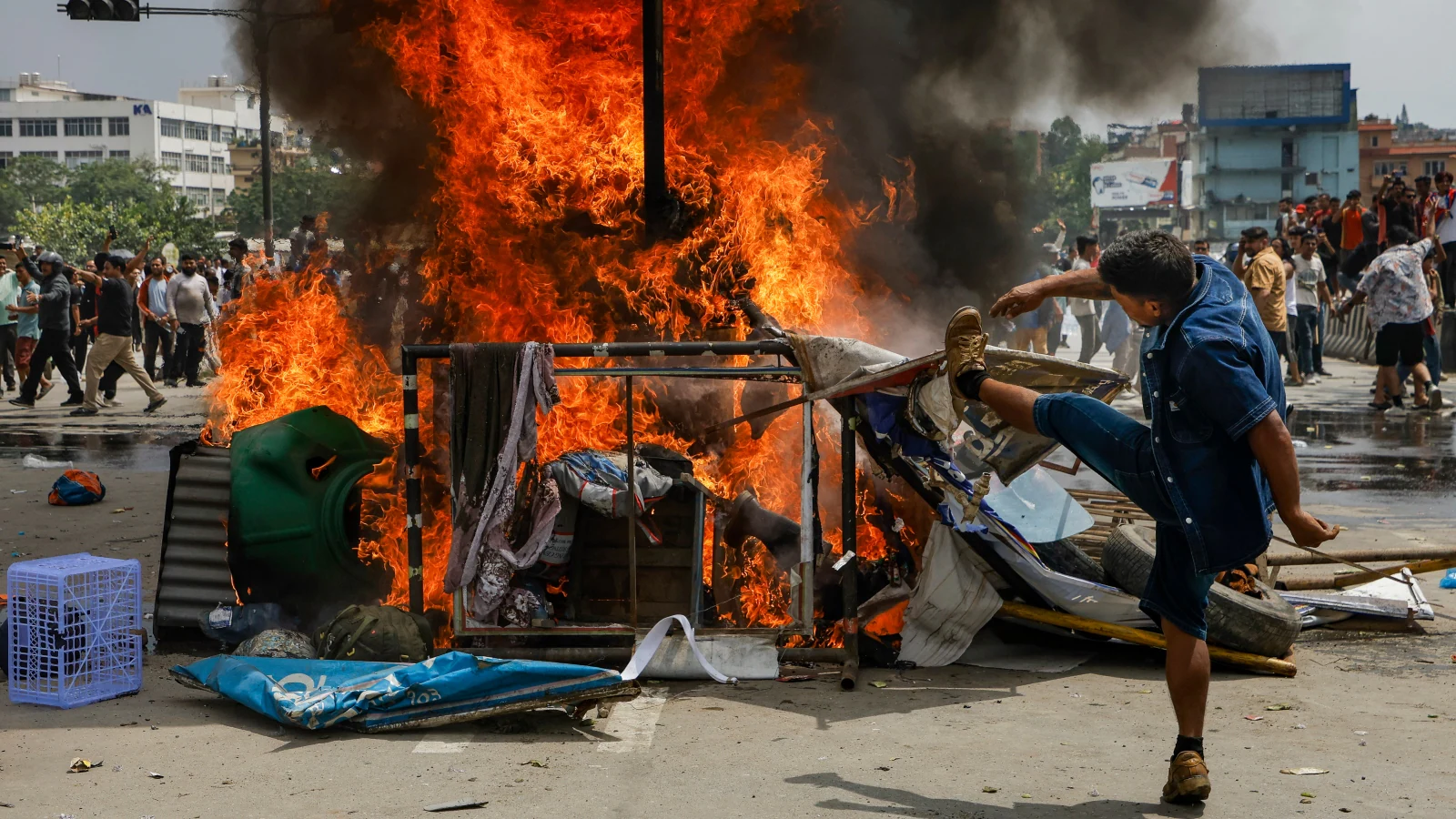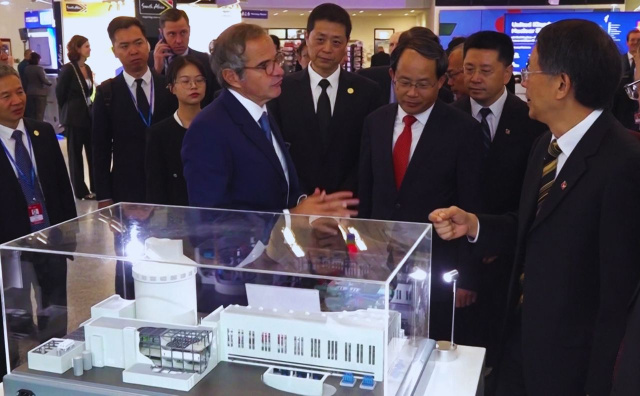By News18,Sanbeer Singh Ranhotra
Copyright news18

As Nepal erupted in violence this month, over 70 people were killed. KP Sharma Oli’s government, and the larger Communist regime, were toppled. After the street protests, Nepal now has former Supreme Court Chief Justice Sushika Karki as interim Prime Minister. For India, that is a big win. However, some misguided voices back home have been wondering aloud why we don’t witness similar “revolutionary” upheavals. This dangerous romanticism of chaos reveals a profound misunderstanding of what real democratic strength looks like.
After all, India’s political stability is neither an accident nor a weakness. It is our greatest achievement in a region where governments have been falling like dominoes.
The Neighbourhood Burns While India Stands Firm
Look around the Indian subcontinent today, and all you are likely to see is the carnage of political instability. Remember the scenes from Bangladesh last year, when Sheikh Hasina had to flee for her life after radical Islamists used young students as their vehicle to effectuate a regime change? Then there is the case of Sri Lanka, which reeled under economic collapse in 2022. This led to Gotabaya Rajapaksas’ dramatic exit with protesters occupying the presidential palace in Colombo. At the same time, Pakistan continues to be led by its military regime, with Imran Khan’s ouster in 2022 triggering nationwide unrest. Myanmar remains under military rule after the 2021 coup. Afghanistan, meanwhile, is now living life under Taliban control.
Now, Nepal has joined the crowd too—or so it seemed when GenZ protesters burned down the parliament, supreme court and politicians’ homes. The death toll from just two days of violence exceeded anything Nepal had seen since its civil war ended.
Indian Subcontinent: 2021 – 2025
2021: U.S. exits Afghanistan; Taliban takes charge
2021: Myanmar falls into civil war; military junta takes charge
2022: Sri Lanka burns with protests; Gotabaya Rajapaksa ousted
2023: Pakistan’s Prime Minister Imran Khan is arrested; Army…
— Sanbeer Singh Ranhotra (@SSanbeer) September 9, 2025
But here’s the amusing bit: at a time when the region is battling growing instability, some Indians are lamenting our “boring” stability. They mistake the absence of “revolutionary” chaos for democratic stagnation. This is profoundly wrong.
India’s Democratic Exceptionalism
India has weathered storms that would have toppled any other nation in the subcontinent. We survived Partition’s horrors, the 1975 Emergency, decades of terrorism in Punjab, Kashmir and the Northeast, periods of tremendous communal vitriol, and countless other challenges. Each time, our institutions felt the heat, but never broke. Each crisis strengthened rather than weakened India’s democratic foundations
The Emergency serves as the perfect example. When Indira Gandhi suspended democracy, arrested over 110,000 people, and muzzled the press, India’s democratic immune system ultimately rejected this authoritarian infection. The experience taught us invaluable lessons about the dangers of unchecked executive power and led to constitutional safeguards that prevent such overreach today.
Contrast this with our neighbours, where every political crisis threatens complete system collapse.
Today, India’s democratic resilience is embodied by Prime Minister Narendra Modi, who commands the world’s highest approval rating among democratic leaders at 75 per cent. This isn’t just domestic popularity but global recognition of effective governance. South Korean President Lee Jae-myung trails far behind at 59 per cent.
Modi’s sustained approval ratings over 11 years in office reflect something those street revolutionaries in neighbouring countries can never achieve: legitimacy earned through ballots, not bullets. While other regional leaders face coups, revolts, or exile, Modi was democratically re-elected for a historic third term. Despite a major shrinkage in the BJP’s seat share, the party and its supporters accepted the mandate for what it was – and learnt the requisite lessons in time.
The Nepal Lesson Misunderstood
Critics fundamentally misread Nepal’s recent upheaval. Yes, KP Sharma Oli fell, but look who replaced him: Sushila Karki, a 73-year-old former chief justice with strong pro-India credentials. Karki studied at Banaras Hindu University, describes herself as a “friend of India”, and has praised Modi’s leadership. She emerged through the protesters’ online discord consultations precisely because of her integrity and independence.
This represents a crucial victory for New Delhi’s patient diplomacy. For years, Oli had tilted toward Beijing, making China his first official visit destination and signing Belt and Road Initiative agreements. His fall removes a China-friendly leader and installs someone genuinely committed to Indo-Nepal friendship.
India’s restrained response to Nepal’s chaos, offering congratulations to Karki while supporting the right of the Nepali people to chart their own future, demonstrates mature statecraft.
Stability as Strength, Not Stagnation
Those cribbing about India’s lack of revolutionary fervour miss the point entirely. Their central assumption is that for a democracy to be classified as “healthy” and “vibrant”, street battles or burning Parliaments should not only be normalised, but even encouraged. They fail to realise that India has institutions strong enough to channel dissent peacefully, systems robust enough to survive transitions, and a society mature enough to choose ballots over bullets.
India’s democratic exceptionalism in a volatile subcontinent is not despite our stability, rather because of it. While neighbours lurch from crisis to crisis, India has built and nurtured institutions that can accommodate our vast diversity, manage our complex federalism, and ensure peaceful transitions of power.
The 2024 general elections perfectly illustrate this point. Despite predictions of discord, India conducted the world’s largest democratic exercise smoothly. The opposition gained seats, regional parties remained relevant, and the whole process concluded peacefully — exactly as it should in a mature democracy. Obviously, there are certain elements who are now retrospectively claiming “Vote Chori,” but that has more to do with the upcoming Bihar elections than any genuine concern for the state of democracy in India.
It is evident that regional instability is spreading – not organically I might add. There are powers to whom India’s rise as a global power poses significant challenges. It is but natural for such powers to employ every dirty trick to scuttle India’s rise, and setting its neighbourhood on fire is just one piece of the puzzle. Therefore, India’s steady leadership becomes even more valuable for the subcontinent as a whole. Our democratic resilience offers a model that others can aspire to emulate, even as they struggle with their own political chaos. Meanwhile, those yearning for Nepal-style upheavals in India should be careful what they wish for. In a neighbourhood on fire, stability isn’t stagnation. It’s strength.



